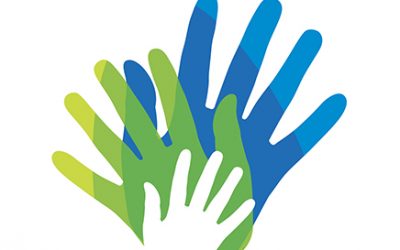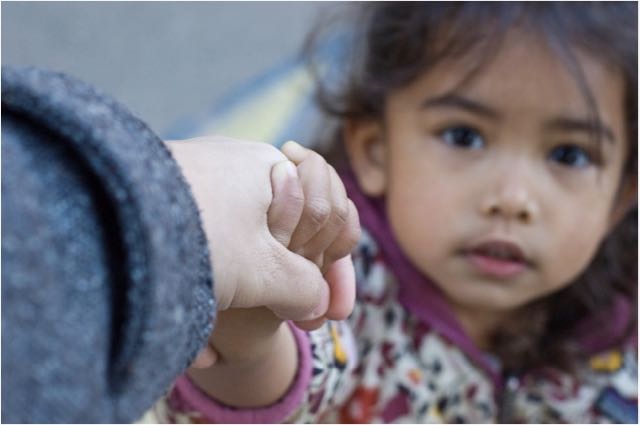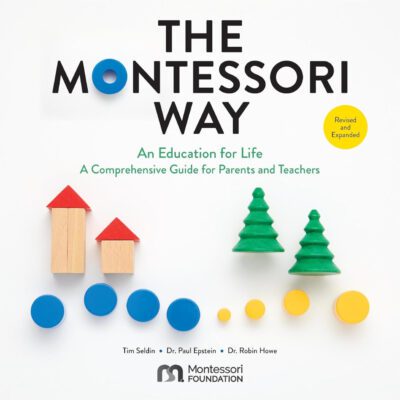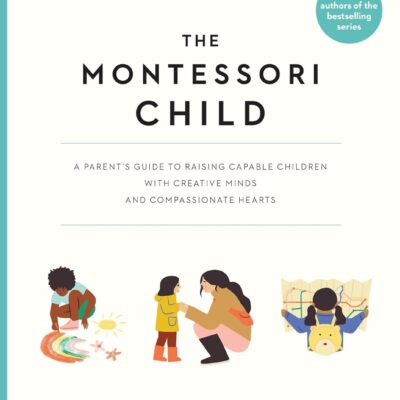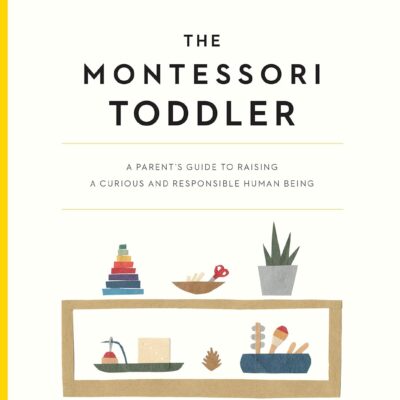
Independent work begins with choice, and choice is a necessary work element for self-development.
Look in a Montessori classroom with twenty or more very busy children between the ages of almost three and six, and you will see children who are passionate about their work. They are focused, self-directed, and persistent. Three-year-old John cuts an apple and then shares apple slices with his friends. Four-year-old Peter traces metal shapes with colored pencils. Five-year-old Sara counts colored wooden squares and then writes numerals on a math paper. When children work with passion, they are curious, creative, inquisitive, imaginative, constructive, thoughtful, orderly, and more. Children love to work. This is how they grow.
Children’s “work” has many meanings.
In a Montessori setting, the word “work” conveys several meanings. Work identifies a learning activity. For example, a food preparation work, a writing work, or a math work. When a child uses a learning activity, he may say, “This is my work.”
Work activities occur during the “work period.” The classroom schedule may include a 2 ½ to 3 hour morning work period. The schedule may also include a shorter afternoon work period. During the work period, children may choose work that is for one child; other works may be used by two or more children. Some works are designed to be used on a table. Other work is used on a floor. Before bringing it to the floor, children will unroll a work rug. The work rug assists the young child with keeping the learning objects together on the rug. The work rug also announces to the other children, “Please walk around my work.”
“Work” also describes a child’s responsibilities for taking care of the work materials. It can happen that a child finishes her work, and then she may decide to go to the shelf and choose another work, another learning activity. The teacher will offer the child a gentle reminder, “Please put your work away before you choose another work.”
Children’s work has both practical and developmental purpose.
“Work” refers to the practical purpose found in each learning activity. For example, a child works with the subtraction strip board and learns a subtraction process. Another child works with the bow-tying dressing frame and learns a bow-tying process. Work has yet another meaning. The child’s process of self-development is also called work. For this reason, we do not interrupt children when they work. They are developing their potential within themselves. The work of the child is to become an adult.
For example, three-year-old Martha transfers dried beans from one bowl to a second with a wooden tong. The practical purpose for this work is to learn to use tongs. The developmental purpose is to learn to concentrate and strengthen and develop hand coordination, a necessary preparation for learning to write when she is older.
Children’s work has several more characteristics.
Several more characteristics describe children engaged in purposeful, self-development work. Children will work independently from others. They become absorbed and concentrate for long periods of time. Children will use learning activities with tremendous repetition; they complete a work task, and then they do it all over again. And they are not concerned about making mistakes; mistakes are children’s recipes for learning.
Children make independent choices when they work.
Remarkably, young children are compelled to engage in activities by themselves. They are not directed by teachers. In the Montessori classroom, a teacher will not do anything for children if they are ready for us to show them how to do it themselves.
Independent work begins with choice, and choice is a necessary work element for self-development. When children make independent choices, they learn to become self-directed and self-disciplined. Children choose their own work. Each child will also choose how to use it and how long to use it. When children choose their own work, they are choosing what they need for their growth and development. They choose what they need to develop their unique potential. Consequently, no two children learn at the same time or in the same way, and each child will only learn when she is ready.
Children who are independent can choose their own work and work with concentration. They can persist, overcome challenges, and self-correct. They have developed habits of learning.
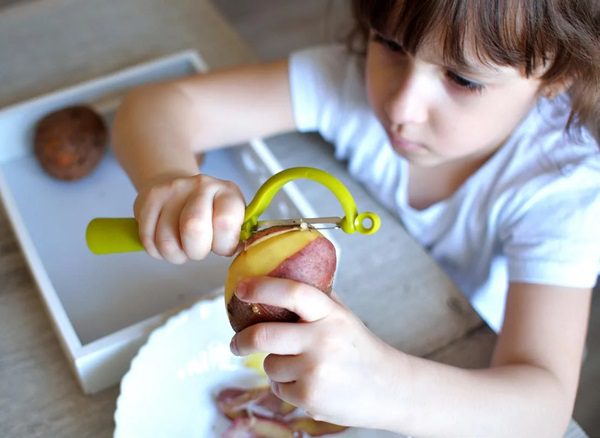
Children develop understanding when they work.
Work with the Montessori materials assists children with developing conceptual understanding. For example, size is an abstract concept. If young children could reason and learn solely with language, we could tell them the meaning of size, and they would understand. Instead, young children are perceptual learners. Young children learn with their senses (sight, sound, touch, taste, and smell) and from what they can do with objects.
Perceptual learners “think” with objects. They understand concepts by arranging and comparing objects. Something is rough because it is not smooth. Something is sweet because it is not sour.
For example, four-year-old Martin arranges a set of ten wooden rods. A practical purpose for this material is to understand length. Each rod is painted in the same red color. The shortest red rod is 10 cm. long; the next is 20 cm. long; and the next rods progress in length by ten more centimeters to the longest red rod which is 100 cm. or 1 meter long. Martin places the red rods randomly on his work rug. He then places two rods side-by-side, compares their lengths, and in this way arranges all ten rods from shortest to longest. Martin now mixes the rods and sorts them by length again. Martin repeats his work with the red rods six times.
Children prefer the process of work and not results.
Children are not result oriented. They are, instead, process oriented, and they are compelled to work with repetition. Children may prefer process because they are not interested in perfection. Perfection is a final state; there is no further growth after becoming perfect. The child’s purpose is to develop his or her unlimited potential, and repetition is how they do this.
For example, two-year-old Beth has been working with an apron for about ten minutes. She puts it on over her head, and then she takes it off. She looks at the apron, turns it sideways, and then puts it on over her head. And then takes it off, and then puts it back on. At any moment an adult could help Beth, but Beth does not ask for help. Apparently, she is not interested in wearing the apron. Beth’s choice is developmental. She is purposefully practicing putting it on and taking it off.
Three-year-old Tommy picks up a pitcher containing red-colored water. Tommy places a funnel into an empty jar, he pours the colored water into the funnel and watches the water drain into the jar. Now he places the funnel into a second jar, pours water into the funnel, and again watches the water drain. Some water spills onto the table. He places the pitcher on the table, picks up a small sponge, wipes the water spill, and squeezes the sponge into the pitcher. He now pours the jar water back into the pitcher. Then he does it all over again, and then again. Tommy busies himself for some 25 minutes with this activity. Sometimes he pours slowly, sometimes quickly, sometimes with the funnel, and sometimes without. The practical purpose of this work is to learn to pour liquids through a funnel and to decide to stop pouring when the jars are filled. The developmental purpose is to develop coordination, concentrate, and make judgments.
Children develop both practical skills and satisfy developmental purposes from repetition and practice. They develop their abilities to concentrate, observe, compare, make decisions, innovate, and more. For example, four-year-old Michelle has been sorting and building with 27 colored blocks already for 15 minutes. The colored blocks make up ten different combinations of sizes and colors. When put together, the blocks form a trinomial cube. Michelle is absorbed. She sorts the blocks by sizes and colors, builds the cube, and then takes it apart. Then she builds the cube all over again, each time beginning with a different block. Perhaps she is fascinated with the size and color patterns; perhaps she is fascinated with how these blocks always come together and form a cube.
Children’s work includes making many mistakes.
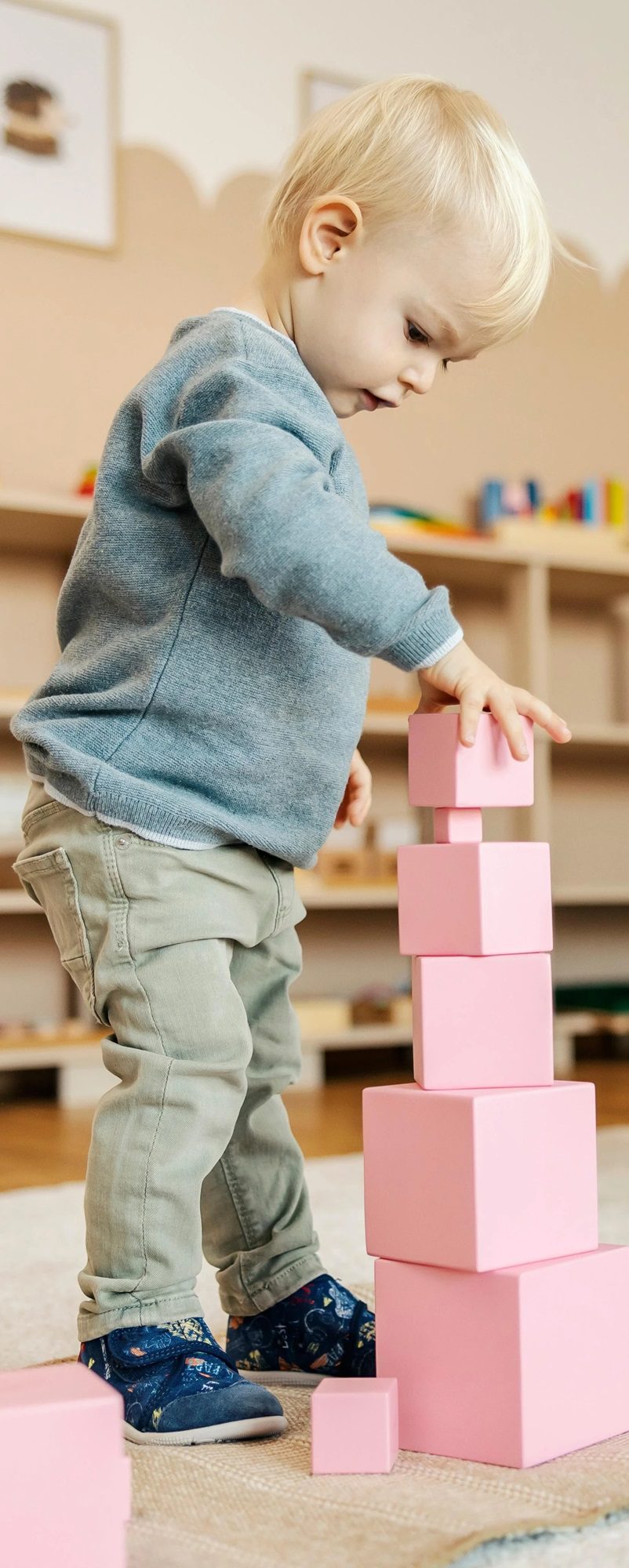
Children are mistake oriented; they are not afraid to make many, many mistakes. We should celebrate the necessity of making mistakes because this is how children learn. Their work process is to explore, investigate, make mistakes, discover, and then do It again. For example, learning to pour requires developing eye and hand coordination that prevents spilling. Learning to spell requires developing writing coordination and knowledge of English phonemes that prevent writing pear as pair or writing see as sea.
The Montessori learning materials are designed to guide children to learn to recognize and then self-correct their mistakes. For example, Tammy works with the Knobbed Cylinder Block. The purpose of this material is to learn about size and to develop the ability to reason and make judgments. There are ten cylinders in the block. The ten cylinders are the same length, and they differ in diameter. Each cylinder fits exactly into one hole in the block. Tammy takes out each cylinder and then puts them back into the block. Sometimes she puts cylinders in the wrong places — the cylinders do not fit into the wrong places. Once the cylinders are properly returned, she repeats and does it all over again. Some children will repeat this work process 15, 20, or more times.
Erin builds a block tower, and the tower falls. She tries again, and she stacks the blocks in a different way. The tower falls again. From these building mistakes, Erin gains valuable experiential knowledge about cause and effect, balance, creative problem solving, and the value of learning from trial and error. This work is called the Pink Tower. This is a set of ten cubes, and the cubes are painted in an identical pink color. The cubes are not the same size. They are graded in size from 1 cm3 to 10 cm3. The purpose of this work is for the child to develop an understanding of size. Children develop this understanding with their senses. They hold and see each cube, compare the sizes and weights of each cube, and arrange the cubes in order from largest to smallest or from smallest to largest.
When children work, their repetition guides them to learn how to self-correct. Although the cubes differ in size, the child may place some of the cubes in the wrong size order. Should this happen, the teacher will merely observe and patiently wait and see what the child will do next. Will the child notice the sequence of cubes is not in a size order? Will the child self-correct and rearrange the cubes?
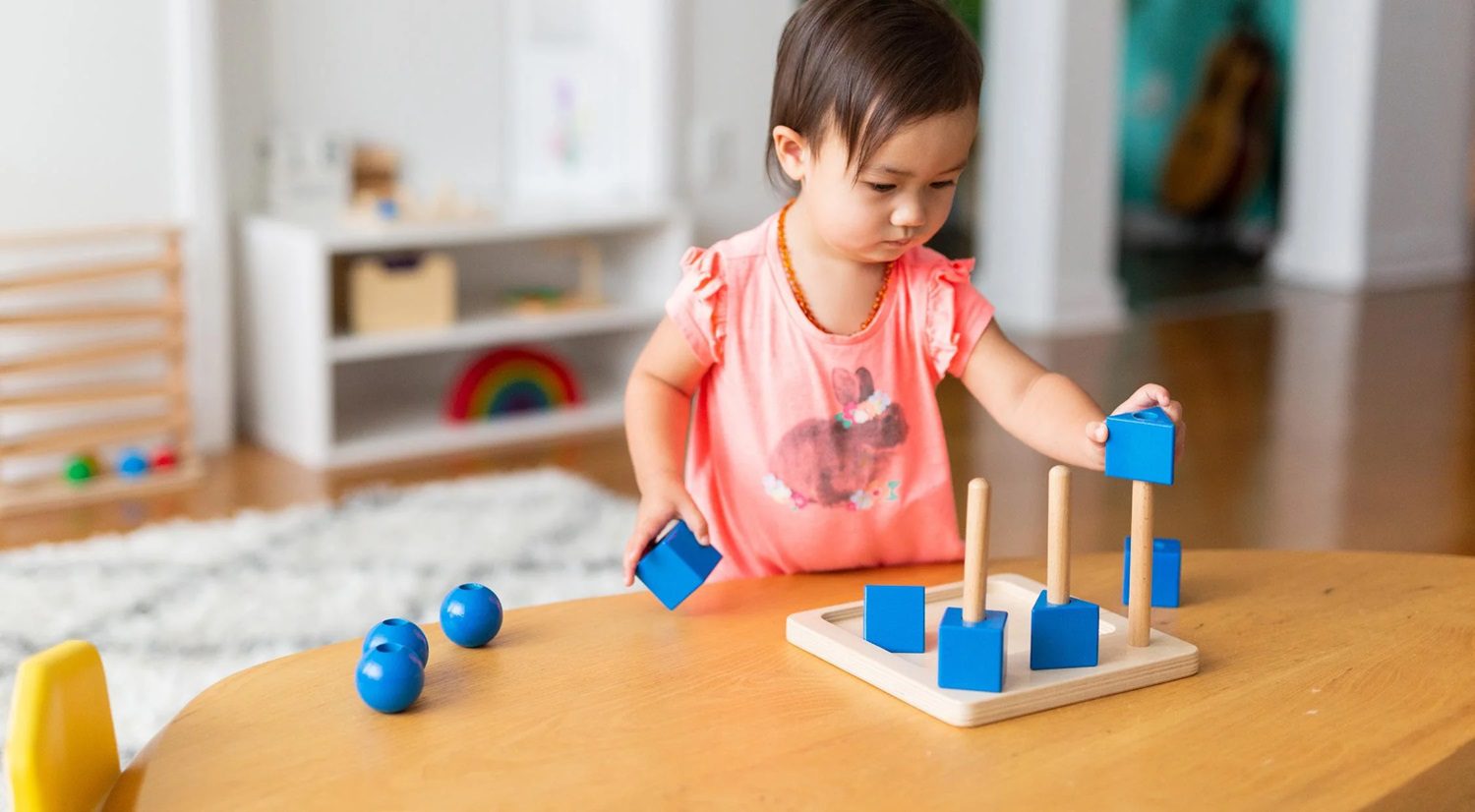
Children’s work differs from adults’ work.
Remarkably, work does not tire children. Instead, they become energized from engaging in work they have chosen. Adults, of course, also work, and we also develop ourselves from our work. For example, we go to the gym and “workout.” We can work to master some knowledge and skills and better ourselves. We also work to produce results. We often work efficiently and effectively to produce the most results we can, in the least amount of time, and with the least amount of effort. We love results, and we feel satisfied when we check it off the list. We adults are motivated to work for intrinsic and extrinsic rewards. We work out at the gym for the benefit of health and strength. And we may work at work for the benefit of a salary.
Children work for the benefit of growing up and becoming adults, and they do this without a contract or promise of salary in exchange for their time and the value they produce. When young children finish an activity, they do not check it off a list. Instead, they may do their work all over again. Children’s work often lacks efficiency and effectiveness. They may make unpredictable movements, and they may make many messes. Unlike an adult, young children do not work with minimal effort. They are “all in!” They love to work! Dr. Maria Montessori described a child’s work process:
[The] child has a personality which he is seeking to expand; he has initiative, he chooses his own work, persists in it, changes it according to his inner needs; he does not shirk effort, he rather goes in search of it, and with great joy overcomes obstacles within his capacity. (Dr. Montessori’s Own Handbook, pp.77- 78.)
For children, work is a continuous process of self-development, and children must work to develop everything: their personalities and walking, running, climbing; understanding and speaking language; socializing and expressing emotions; reasoning and creating; overcoming obstacles and persisting; solving problems, being creative, and more.
Children passionately engage in work because they are passionate to grow and become themselves. When they work, they are scientists, filled with wonder and curiosity. They are intent on investigating the world and developing themselves. They are not afraid to experiment and see what will happen when they try this and then that. For children, it’s all in a day’s work.

Paul Epstein is the educational director of Designs for Lifelong Learning. He has worked in education as an administrator, university professor, teacher trainer, classroom teacher, researcher, consultant, and author.
Paul brings transformative learning experiences to educators and parents throughout the world. He is the author of numerous articles and books including An Observer’s Notebook: Learning from Children with the Observation C.O.R.E. He is also the co-author of The 60-Day Montessori Observation Workbook and The Montessori Way, a definitive work on the Montessori experience.
His administrative experiences include working as a head of Montessori schools, and he brought the International Baccalaureate Middle Years Program to one of the schools. Paul also works as a director and instructor of Montessori teacher education programs. He has been a Montessori classroom teacher in Montessori early childhood, middle, and high school programs.
Paul holds Montessori teacher certification in early childhood and secondary levels one and two from the American Montessori Society and his doctorate is in Cultural Anthropology.


